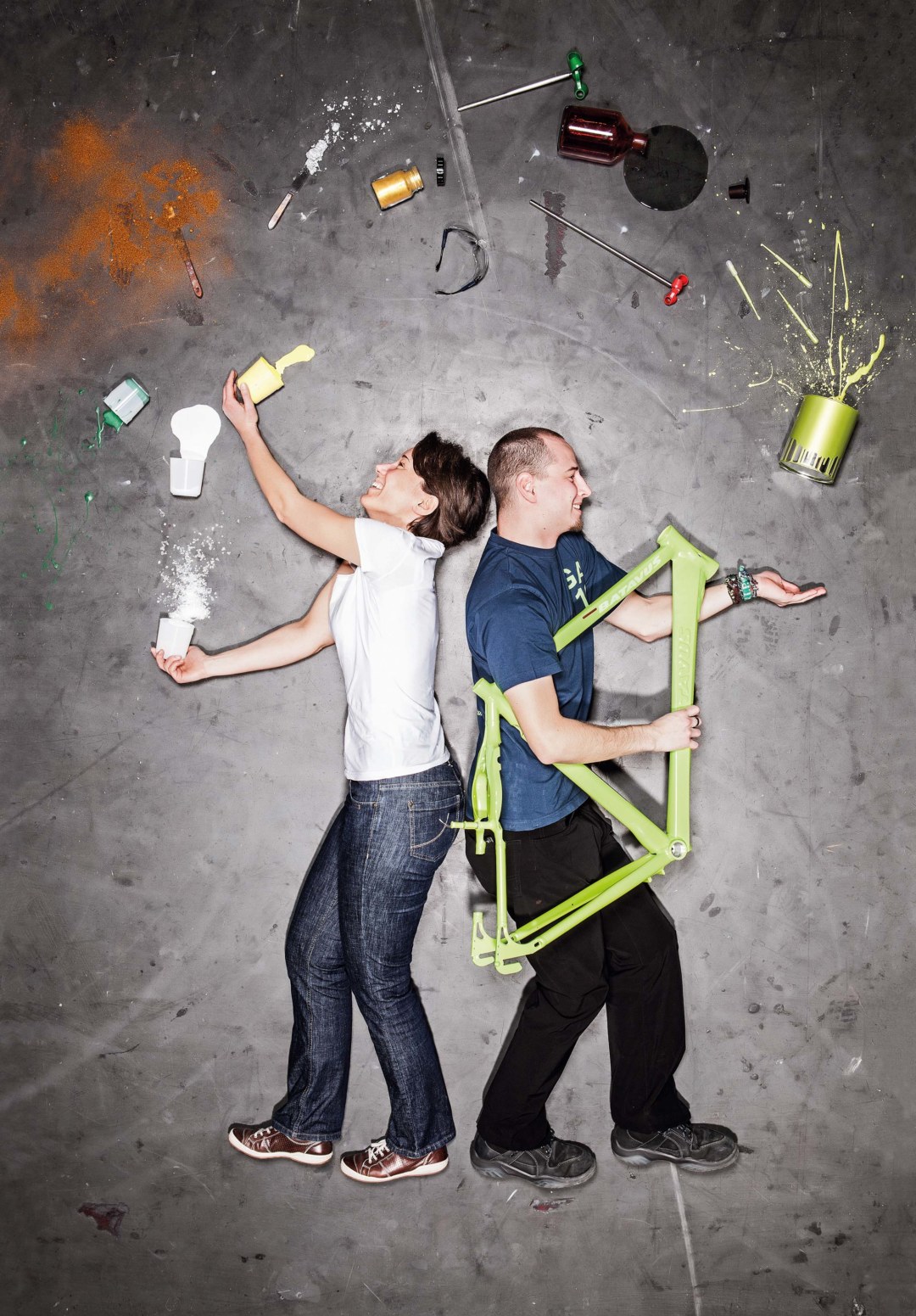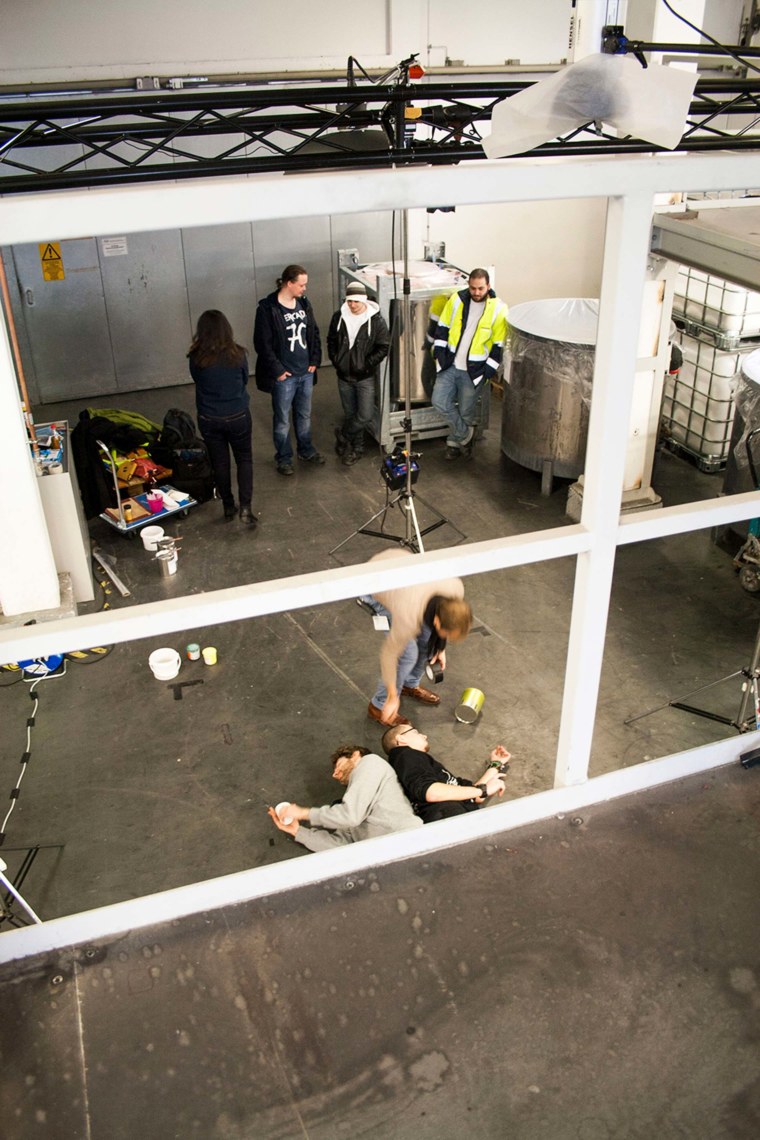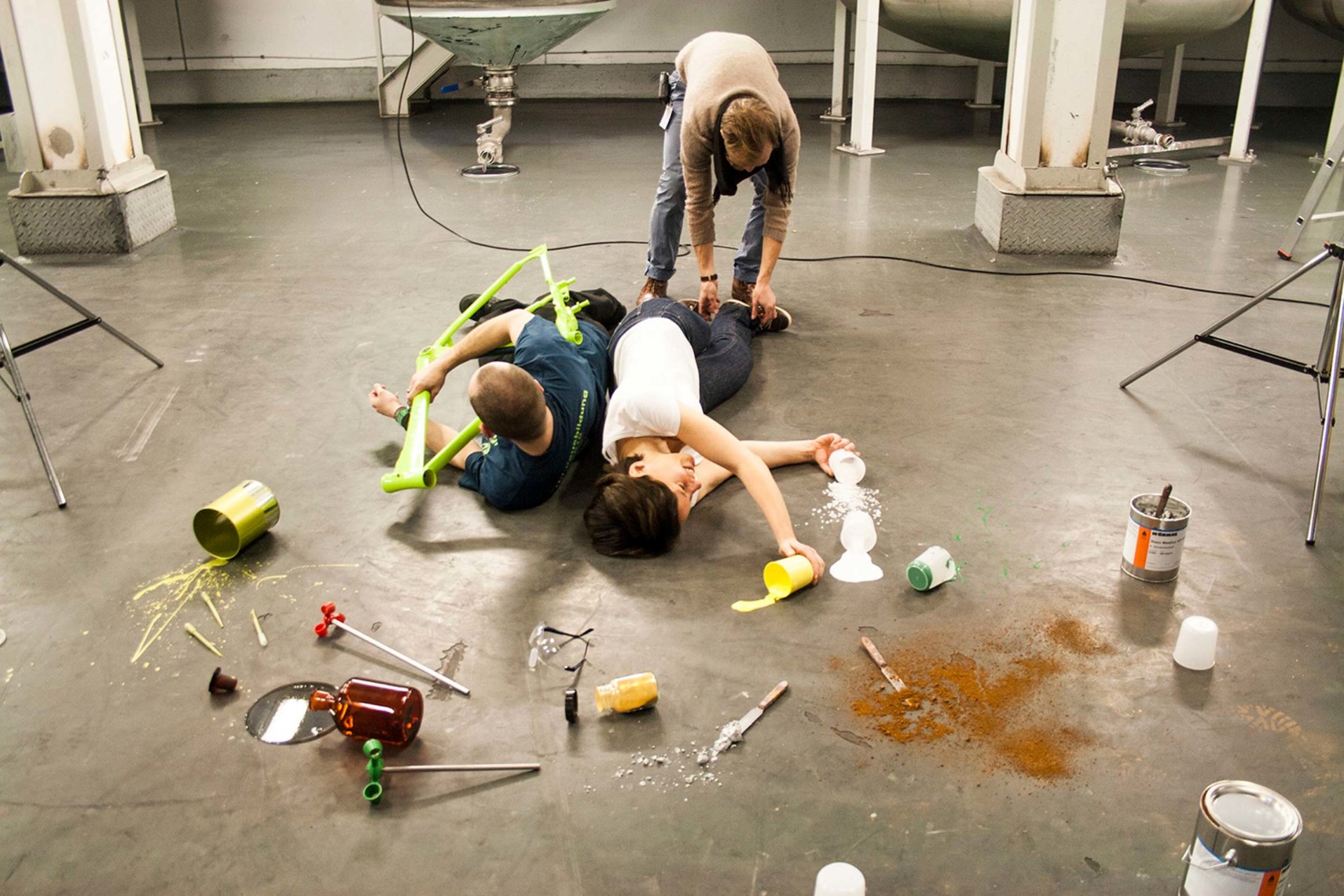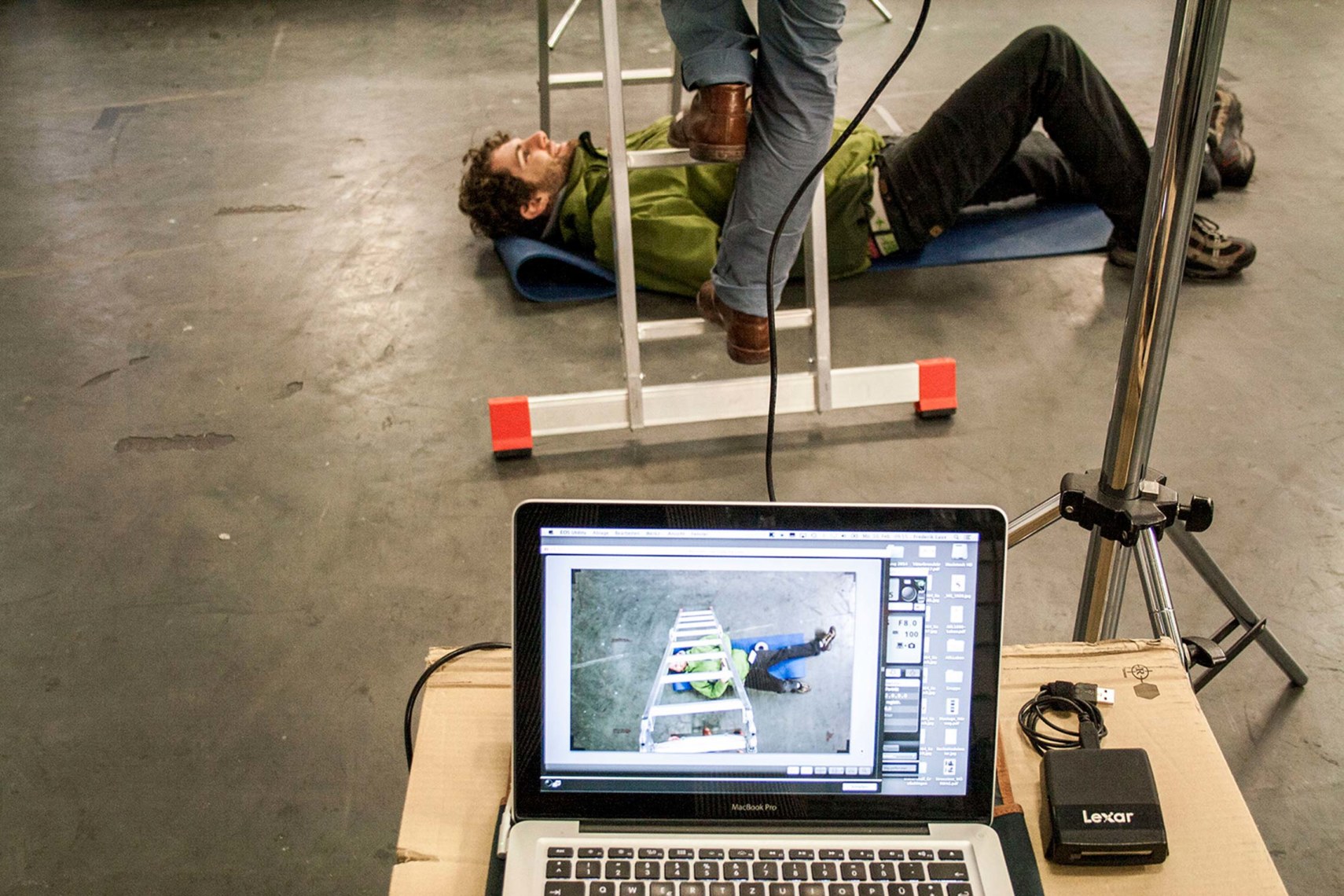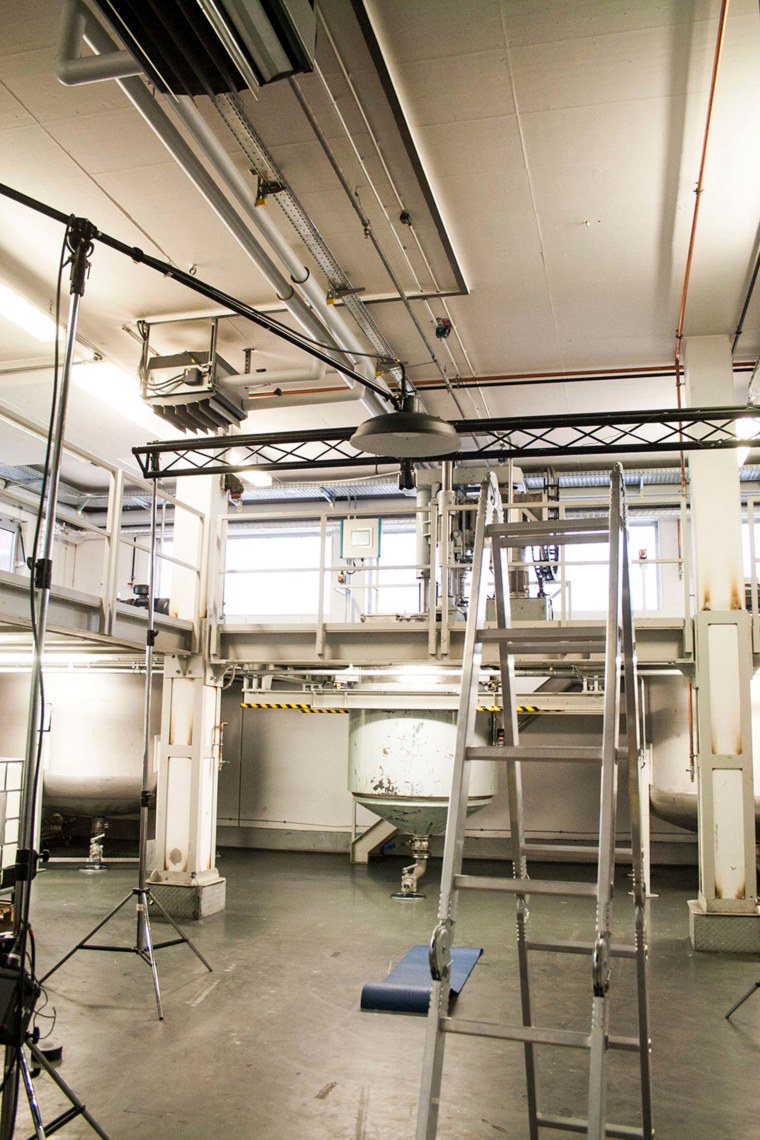Pigments that produce gloss
Bischoff has set his illustration aside. He weighs the first ingredient, a semi-finished product, and pours it into the mixing bucket. The base material consists in large part of a binding agent. Thickeners are added so drops won’t form when the paint is applied, as well as water, solvents, and pigment pastes. Hörner takes two cans from a cabinet. One contains aluminum pigments, the other a pearlescent gloss.
The latter looks like flour, but produces a yellowish sheen when rubbed on the back of a hand, for example. “Pigments of this type are also used in cosmetic products like eye shadow,” she remarks. Then it’s time to mix. The electric mixer, which looks like a cross between a kitchen appliance and a stationary drill, comes to life with a soft hum. As the pigments are added, the desired shade slowly appears. Despite all the ingredients in use, there is scarcely any odor.
In the right light
The developers also create paints of their own. Once a year they present them to car makers after applying them to pieces of sheet metal. The metal is bent in the middle to show the effect on vehicle contours. To see how the shade changes under different light conditions, the developers use a light cabinet—a separate room with special lamps that can simulate all nuances of light from dawn to dusk.
By the way, not only the color has to be right. The paint itself has to have physical properties that enable it to be used flawlessly at every paint shop. That is why Wörwag mixes it differently for every type of facility depending on information provided by the customer. If a car maker selects a certain paint, this product must first demonstrate that it meets the specifications over the course of complex and often lengthy tests (for more information, see the “Paint Under Stress” article in this issue).
After a good hour of work, the paint for the apprentice’s bicycle is ready. All that remains is to test it on a piece of sheet metal. After it dries, Bischoff takes it out of the oven, carries it to the light cabinet, and assesses the color’s changing appearance. Then he takes another look at the effect in natural light by the window. “Perfect!” he exclaims. A pearlescent yellow-green. Exactly what he wanted.
“It helps to look through the archive—for we might have developed a similar shade in the past”, Herbert Kost.
Presenting your new car paint
As a supplier for the automobile industry, one of the products Wörwag develops is paint for entire car bodies. The company’s designers and pigment specialists develop paints not only when commissioned by customers but also based on their own ideas. They present the latter to selected parties once a year. It takes an average of six months from inspiration to presentation of each of these ten to twelve proposals. The paints contain up to three effect pigments as well as three to five color pigments. They can have as many as fifteen ingredients overall. Wörwag mixes volumes of up to 25 kilos at its development lab. Its regular production facilities supply volumes from 100 kilos to 20 tons.
Text: Thorsten Schönfeld
Photo: Frederik Laux
